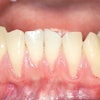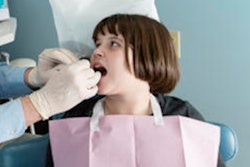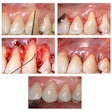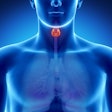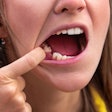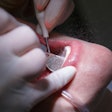
It's been 10 years since the U.S. surgeon general's report on oral health in America, which among other things advocated interdisciplinary training between medical and dental providers. But current research shows that primary medical care providers are still not comfortable performing basic oral health assessments, and many consider oral health outside their realm of practice.
"The time has arrived for each profession to recognize the benefit of coordinated treatment plans to better manage patients," Charles Cobb, DDS, PhD, professor emeritus at the University of Missouri-Kansas City School of Dentistry and co-author of a new study that used the theory of planned behavior to examine nurse practitioners' understanding of the link between periodontal disease and systemic health (Journal of Periodontology, December 2010, Vol. 81:12, pp. 1805-1813).
The researchers surveyed 200 primary care providers about practice behaviors, attitudes, opinions, and knowledge regarding the periodontal disease-systemic link and used 137 partially and fully complete questionnaires for their data analyses. Of the 137 questionnaires, 123 were completed by nurse practitioners.
Dr. Cobb and colleagues found that 22% of the respondents reported they always or routinely screen for periodontal disease. Using the theory of planned behavior -- which explains behavior as a function of intent, including such factors as attitudes, social norms, and perceived control -- they found that the likelihood of screening increased if the providers felt confident in their training (attitude), felt like it was within their scope of practice (social norm), and felt that they had control over office protocols (control).
"A change in professional and peer expectations about periodontal assessments would be an important factor in improving rates of screening," said Dr. Cobb. Limited time and concerns over reimbursement were also found to be factors.
Interdisciplinary/interprofessional education
In addition to recognizing the importance of the oral and systemic health link, primary medical care providers are being asked to assess oral health to help overcome disparities in access to care. Low-income and minority children, the elderly, people with developmental disabilities, and adults with less than a high school education are at particular risk for limited access to oral health services and a shortage of dental providers, according to the U.S. Centers for Disease Control and Prevention.
To address these disparities, health personnel who encounter patients without oral healthcare need to be able to perform simple assessments (Journal of Dental Education, May 2004, Vol. 68:5, pp. 505-512). Personnel also need to be aware of oral health resources in the community that will take patients on referral. In the case of infants and young children in the U.S., 95% have a physician but very few have a dentist, the researchers noted.
Other studies have shown that pediatric residents receive little training before completing their programs. When 661 pediatric graduating residents were surveyed in 2006, 35% of respondents stated they received no oral health training during residency (Pediatrics, August 2008, Vol. 122:2, pp. e465-e471). Of those who did receive some training, 73% had less than three hours of training and only 14% had clinical observation time with a dentist.
Similarly, a survey sent to 1,618 postresidency fellows of the American Academy of Pediatrics found that while more than 90% of pediatricians said they should examine their patients' teeth for caries and educate families about preventive oral health, in practice only 54% reported examining the teeth of more than half of their 0- to 3-year-old patients (Academic Pediatrics, November-December 2009, Vol. 9:6, pp. 457-461). In addition, the survey found that less than 25% of pediatricians had received oral health training.
Primary care training for adults fared no better. In a survey issued to incoming internal medicine trainees, 82% of the 115 respondents reported they never asked patients if they had been diagnosed with periodontal disease, and 90% reported not receiving any training about periodontal disease in medical school (J Periodontol, March 2010, Vol. 81:3, pp. 359-363). Nearly 70% reported that they were not comfortable "at all" doing a simple periodontal exam, 46% felt that discussing/screening for periodontal disease was outside their role as physicians, and 23% said they never referred patients to dentists.
"Somehow, there must be a recognition of value to doing even a 'tongue blade' visual examination of the oral cavity to determine obvious signs of inflammation," says Dr. Cobb. "Currently, such a visual examination is not part of the routine in medicine and nursing."
However, the "historic separation" of medicine and dentistry have kept the systems of education and training, financing, and service delivery separate, noted Wendy Mouradian, MD, MS, professor of pediatric dentistry and pediatrics at the University of Washington Schools of Dentistry and Medicine and co-author on the 2009 Academic Pediatrics and 2004 Journal of Dental Education papers.
"While microorganisms know no such barriers, health professional education and primary care practice lags behind today's science," she told DrBicuspid.com. "What is needed are cultural changes within medicine and dentistry and practical strategies to ensure better communication between practitioners and integration, or at least coordination, of health services."
Improving education
Efforts are under way to address these disparities. A 2003 Institute of Medicine (IOM) report, "Health Professions Education: A Bridge to Quality," concluded that all health professionals should be educated to:
- Provide patient-centered care
- Work in interdisciplinary teams
- Employ evidence-based practice
- Apply quality improvement approaches
- Utilize informatics
Using the IOM report as a guide, and as part of a study initiative called "New Models of Dental Education" funded by the Josiah Macy Jr. Foundation, three panels were convened to discuss the future of dental education. Panel 2 of the Macy Study, held in December 2006 and co-sponsored by the American Dental Education Association (ADEA) and the Association of American Medical Colleges (AAMC), discussed education and clinical training of both dentists and physicians (J Dent Educ, February 2008, Vol. 72:2 Suppl., pp. 73-85).
The panel concluded that medical providers would best be trained in oral health using a "spiral curriculum" on oral-systemic health in five key areas: caries, periodontal disease, dental public health issues, oral cancer, and the oral-systemic health relationship. Optimally, content from each of these five areas would be interspersed throughout medical training, starting in basic science courses and then reinforced at higher educational levels and in clinical rotations.
The 19th-century distinction between medicine and dentistry is becoming obsolete as the relation between oral and systemic health blurs, the Macy Panel 2 noted. To integrate new knowledge across the research literature, the panel recommended that clinicians become "sophisticated users of science and technology and avid consumers of interdisciplinary research to best implement the latest in evidence-based practice."
Building on this work, the AAMC will be mounting an effort to expand and disseminate curriculum resources available to medical schools through a cooperative agreement awarded by the Maternal and Child Health Bureau of the Health Resources and Services Administration (HRSA), Dr. Mouradian noted. This award reflects a new focus on oral health within the federal government. Both HRSA and the U.S. Department of Health and Human Services have identified the integration of oral health into primary care as strategic priorities.
"All this will take time and work," Dr. Mouradian said. "But without such efforts, we will be seriously hampered in our ability to address the profound oral health disparities identified by the surgeon general."
Copyright © 2010 DrBicuspid.com
